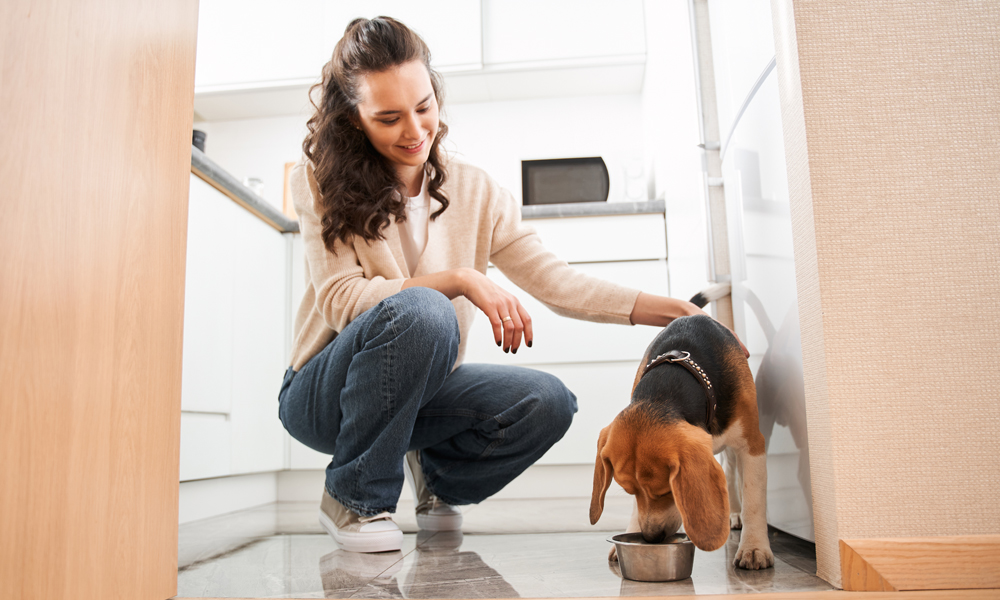Many canines look forward to their daily bowl of kibble, bounding eagerly to the kitchen when they hear the kibble hit the bowl. But should dogs eat the same food every day? Even if they seem to enjoy “the usual,” it’s actually good for your dog’s health to switch it up and practice rotational feeding.
If you feed him the right diet and understand what your dog needs, you can start practicing rotational feeding without upsetting your dog’s system.
In the following, we’ll show the benefits of rotational feeding, and how to get started.
Should dogs eat the same food every day?
Looking to improve your furry friend’s nutritional profile and overall wellness? Rotational feeding is a part of that strategy. Even if your dog enjoys the same kibble, change is good. For one thing, dogs experience so much of the world through scent. Serving up a rich variety of aromas can create more joy and less boredom around your dog’s mealtime. Beyond that, rotational feeding provides your dog with important nutritional and wellness benefits, and here are some of them.
Greater variety of amino acids
Why do dogs crave meat? Meat has critical amino acids that build your dog’s body and make it functional. Amino acids provide the components of muscle and hair follicles while also giving his red blood cells the right stuff to fight off infection.
[For a deep dive on the role of amino acids in your dog’s diet, read Protein for canines: It’s what your dog needs and craves]
A deeper bench of nutrients
Though grain-free diets are popular with pet parents, not to mention beneficial to pets, rotational feeding also means bringing grain-inclusive recipes into the mix. Grains also provide essential vitamins and nutrients to your pup.
Whole harvest grains contain healthy starches and fibers, along with the complete set of B-complex vitamins.
Vegetables and fruits included in the recipe supply your dog with micronutrients and vitamins.
Read up on Heirloom grains: Are they nutritional powerhouses for dogs?
Maintains good gut health
Rotational feeding is part of the overall strategy to maintain good gut health. Introducing different proteins and ingredients, especially early in life, greatly reduces the chance of having an adverse reaction to an ingredient and a cascade of effects.
- Practicing rotational feeding early on can reduce the inflammation that comes with an allergic response, which can otherwise hold back the establishment of a healthy gut microbiome.
- A healthy gut microbiome helps your dog better absorb all the nutrients and fight off infection.
- When your dog’s digestive tract is absorbing more of the “good stuff,” that makes his food more bioavailable to him.
- More bioavailability leads to better health, along with a pet that’s more pleasant to live with (no more runny stools or foul breath).
How to promote gut health
Maintaining a healthy gut starts with a premium diet with the nutrients that heal the gut and eliminate the yeasts and bad bacteria. That’s why NutriSource includes the Good 4 Life supplement system in every bag and can.
- Proteinate minerals and yeast extracts promote good gut health, fight inflammation and support immune response.
- Probiotics — microorganisms that cultivate good bacteria.
- Prebiotics — resistant starches that provide food to the good bacteria.
A healthy gut makes your dog’s dinner more bioavailable, which leads to fewer messy stools to clean up. That’s where pet parents love the results they get from feeding their dog NutriSource.
How to start rotational feeding with your dog
Now that you know the benefits of rotational feeding to your dog’s health, you’ll want to do it in a way that doesn’t disrupt their gastrointestinal system. We’ll show you the secret to getting the results you want.
Is a phased approach needed?
Many feeding guides and veterinarians tell you to introduce new foods gradually. Almost all of them will recommend a 5- to 7-day transition period, starting with a smaller ratio of the new food to the old food, and gradually upping the portion.
When you’re feeding your dog a standard supermarket brand, a phased approach is a smart idea. You want to be sure there’s nothing in the food that will upset your dog’s system. But when you’re transitioning to NutriSource, we think you’ll be pleasantly surprised by how quickly your dog adapts without the usual stomach upset. In the following, we’ll explain why.
When you transition your dog to NutriSource, you’ll see great results right away. Not only do we pack every bag and can with high-quality, carefully sourced ingredients, but our Good 4 Life supplement system also promotes good gut health.
How to transition to NutriSource
When most pet parents transition to NutriSource, they find there is no need to abide by the recommended phased approach. All they have to do is open the bag or can of food and fill the bowl, and that’s it!
However, you know your dog best. If you want to take the traditional phased approach when switching to NutriSource, there’s certainly no harm in doing so. Once you get started, you may quickly realize that you can actually speed up the timeline. We believe our proprietary Good 4 Life nutrients will keep your dog’s system settled and running smoothly.
When to start rotational feeding
With NutriSource, you can start rotational feeding right away. But maybe you want to start out with one bag and see how it goes. After a couple of weeks to a month, take note of any changes in your dog. Not only will your dog be well adjusted to his new diet, but you should also notice great results like these:
- Less poop in the backyard to clean up
- A dog that feels good in their skin, with less itching and paw licking
- Fresher kisses
- Softer, healthier coat
- More energy
- Fewer aches and pains
Good 4 Life builds a healthy gut. Because it’s included in all our formulas, rotational feeding is worry-free for pet parents.
How to choose foods for rotational feeding
The key to rotational feeding with NutriSource is variety. A variety of meats, grains and other ingredients will ensure your dog gets the full slate of amino acids, vitamins and minerals to keep him healthy and satiated.
For example, if your dog had chicken one day, the next you’ll want to try a different animal protein, such as wild boar or trout. Was his last dinner grain-free? Go grain inclusive for the next meal.
In other words, you’ll want to get a rotation of recipe types, meats and whole grains:
Recipe type
- Grain inclusive
- Grain-free
- High meat
- Canned food and stews (toppers for each feeding)
Variety of meats, including:
- Poultry (turkey and chicken)
- Beef
- Fish (trout and salmon)
- Novel meats, like lamb, boar and duck
Variety of whole grains, including:
- Brown rice
- Oatmeal
- Pearled barley
- Spelt
- Oats
- Quinoa
Texture and aroma: Tempt your dog’s palate with toppers and gravy
Rotational feeding is not the only way to create interest and variety for your dog. You’ll want to get wet food into the mix.
- To make gravy, add a spoonful or two of water to the kibble. To release stronger, more enticing scents, microwave the meal for 10 seconds (but no longer than that, or you can burn your pup’s mouth).
- Top off the bowl of kibble with a few spoonfuls of wet food and warm water. The fresh, meaty aroma, along with the savory gravy, will create an even better sensory experience.
- Another benefit of adding wet food and gravy to your dog’s bowl is it’s a good way to help your pooch stay hydrated, especially if you struggle to get him to drink his fill.
How often should you switch foods?
Optimally, you’re feeding your dog something different with each meal. One day he’s dining on lamb, and the next he’s treated to a bowlful of beef and gravy. The variety of aromas and flavors will keep mealtime interesting and enjoyable for your dog, while providing optimized nutrition from nose to tail.
That can require a bit of planning because you want to make sure your pet’s food is always fresh.
- To maintain freshness, buy several smaller bags, each with a different protein and formula. This lets you offer variety without having to waste food.
- Invest in tightly lidded food storage containers. The special packaging in NutriSource bags is designed to keep food fresh longer. Simply roll the bag closed, place it in the container, and that will keep the food as fresh as possible.
If he likes the new food, keep it in the rotation. If he’s hesitating, offer it a few more times, perhaps mixed with wet food, before giving up. Like humans, dogs have their preferences!
Need a simpler system? You can go the one- or two-formulas-at-a-time route. Once you reach the bottom of one bag, switch in a different formula, and keep going down the rotation.
Reach for the brand that focuses on gut health
The secret to rotational feeding is choosing the brand that nourishes and heals the gut. At family-owned NutriSource, we formulate all our foods with our innovative Good 4 Life® system. The probiotics and prebiotics aid in mineral absorption and support immunity by the production of natural antibiotics and antifungals in the gut for optimal health. Find NutriSource at your local, independent pet retailer.


